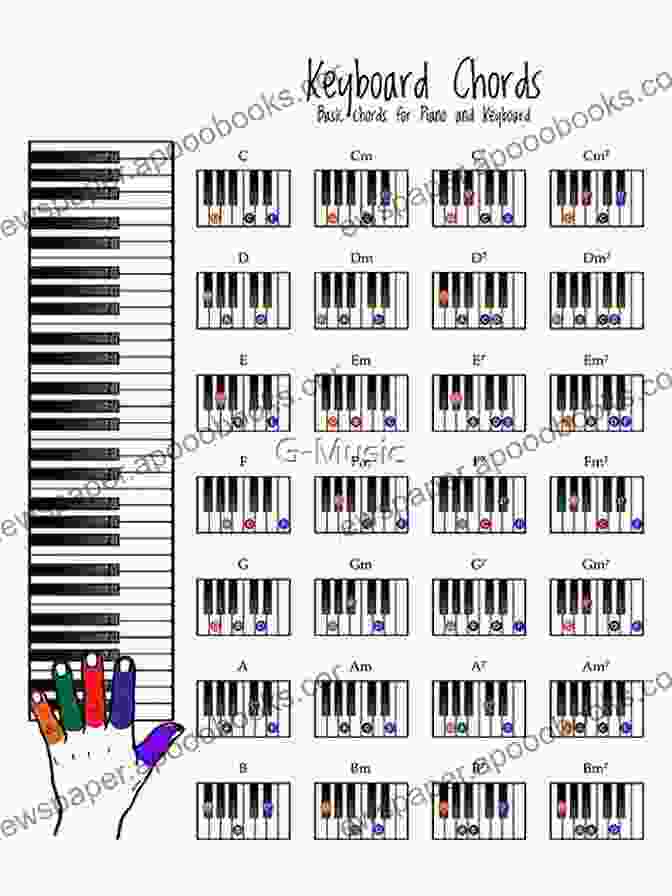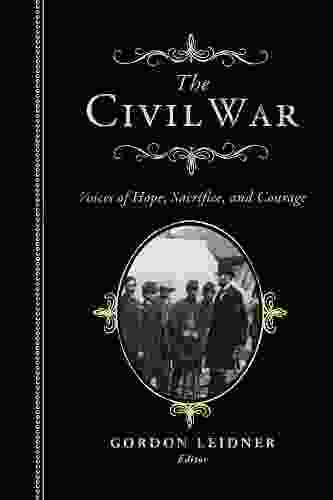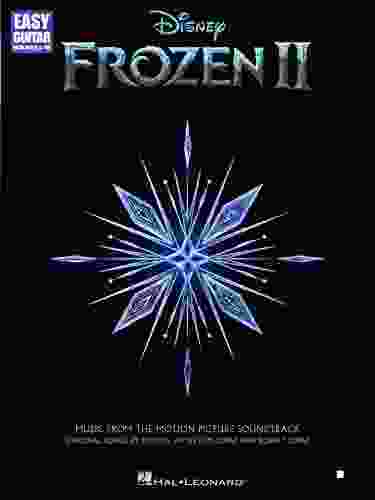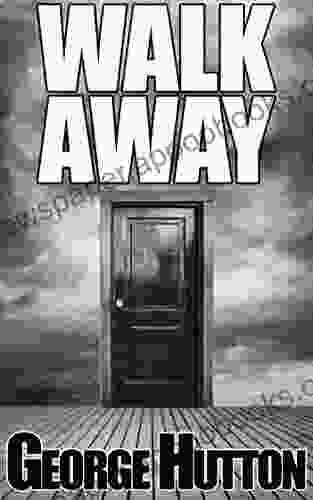Master the Piano: Unlocking the Secrets of Finger Placements and Notes Within the Chord

Embarking on a musical journey with the piano can be both exhilarating and daunting. One of the fundamental aspects that every aspiring pianist must master is the art of finger placements and identifying notes within chords. This comprehensive guide will illuminate these concepts, providing you with the essential knowledge and techniques to unlock your full piano potential.
4.6 out of 5
| Language | : | English |
| File size | : | 6049 KB |
| Text-to-Speech | : | Enabled |
| Screen Reader | : | Supported |
| Enhanced typesetting | : | Enabled |
| Print length | : | 117 pages |
| Lending | : | Enabled |
| Paperback | : | 126 pages |
| Item Weight | : | 8.6 ounces |
| Dimensions | : | 6 x 0.29 x 9 inches |
Understanding Finger Placements
In the realm of piano playing, each finger is assigned a specific key on the keyboard. This standardized finger numbering system simplifies the learning process and ensures consistency in finger movements.

Beginning with the thumb, the fingers are numbered from 1 to 5, corresponding to each white key. The thumb typically occupies the "home position" on middle C (the large white key in the center of the keyboard). From there, fingers 2, 3, 4, and 5 occupy the adjacent keys.
Recognizing Notes Within Chords
A chord is a harmonious combination of three or more notes played simultaneously. Understanding which notes constitute a chord is crucial for both playing and composing music.
The most common type of chord is a triad, which consists of three notes: the root, the third, and the fifth.
- Root: The foundation of the chord, typically the lowest-pitched note.
- Third: The note that creates the characteristic harmony of the chord.
- Fifth: The note that adds depth and fullness to the chord.
Mastering Fingerings for Chords
Choosing the appropriate fingerings for chords is essential for smooth and efficient playing. Proper fingering allows you to transition between chords effortlessly and maintain a consistent rhythm.
While there are multiple viable fingerings for each chord, certain guidelines can assist in finding the most optimal ones:
- Keep fingers close to the keys: Avoid stretching fingers unnecessarily, as this can lead to tension and fatigue.
- Use the same fingers for consecutive notes: This promotes finger independence and minimizes awkward hand movements.
- Avoid crossing fingers: Crossing fingers can disrupt the natural flow of hand movements, making chord transitions more difficult.
Tips for Effective Practice
Regular practice is the key to mastering finger placements and notes within chords. Here are some tips for effective practice:
- Start slowly: Begin by practicing finger placements for individual notes and gradually increase the complexity to include chords.
- Focus on accuracy: Initially, prioritize playing the correct notes with the correct fingers rather than speed.
- Use a metronome: Practicing with a metronome helps maintain a steady rhythm and improves timing.
- Listen carefully: Pay attention to the sound of your playing and adjust your finger placements and notes as needed.
- Break down difficult passages: If you encounter challenging chords or fingerings, break them down into smaller sections and practice them individually.
Advanced Techniques
As you progress in your piano journey, you may explore advanced techniques that enhance your control over finger placements and notes within chords:
- Inversions: Inversions rearrange the arrangement of notes within a chord, creating different harmonic effects.
- Embellishments: Adding grace notes, trills, or turns to chords can enhance their expressiveness and complexity.
- Pedaling: Utilizing the sustain pedal can extend the resonance of chords, creating a richer and more sustained sound.
Mastering finger placements and notes within chords is a fundamental skill for any pianist. By understanding the principles and practicing diligently, you can unlock the full potential of the piano and embark on a captivating musical journey filled with expression and finesse. Remember, consistent practice, attention to detail, and a passion for music will guide you towards pianistic excellence.
4.6 out of 5
| Language | : | English |
| File size | : | 6049 KB |
| Text-to-Speech | : | Enabled |
| Screen Reader | : | Supported |
| Enhanced typesetting | : | Enabled |
| Print length | : | 117 pages |
| Lending | : | Enabled |
| Paperback | : | 126 pages |
| Item Weight | : | 8.6 ounces |
| Dimensions | : | 6 x 0.29 x 9 inches |
Do you want to contribute by writing guest posts on this blog?
Please contact us and send us a resume of previous articles that you have written.
 Book
Book Novel
Novel Page
Page Chapter
Chapter Text
Text Story
Story Genre
Genre Reader
Reader Library
Library Paperback
Paperback E-book
E-book Magazine
Magazine Newspaper
Newspaper Paragraph
Paragraph Sentence
Sentence Bookmark
Bookmark Shelf
Shelf Glossary
Glossary Bibliography
Bibliography Foreword
Foreword Preface
Preface Synopsis
Synopsis Annotation
Annotation Footnote
Footnote Manuscript
Manuscript Scroll
Scroll Codex
Codex Tome
Tome Bestseller
Bestseller Classics
Classics Library card
Library card Narrative
Narrative Biography
Biography Autobiography
Autobiography Memoir
Memoir Reference
Reference Encyclopedia
Encyclopedia Joel Chandler Harris
Joel Chandler Harris Gemma Liviero
Gemma Liviero Laurence Shames
Laurence Shames Gary John Bishop
Gary John Bishop George Alfred Townsend
George Alfred Townsend Gini Graham Scott
Gini Graham Scott Rupert Colley
Rupert Colley Sandy Carlson
Sandy Carlson Michael Savage
Michael Savage Win Blevins
Win Blevins Jukka Aalho
Jukka Aalho Kevin Taggart
Kevin Taggart Timothy G Spokes
Timothy G Spokes Gregory Watson
Gregory Watson Gina Apostol
Gina Apostol Getaway Guides
Getaway Guides Greg Lewis
Greg Lewis Melissa Stewart
Melissa Stewart H G Parry
H G Parry Gerry Spence
Gerry Spence
Light bulbAdvertise smarter! Our strategic ad space ensures maximum exposure. Reserve your spot today!

 William WordsworthLearn The Structures Exercises And Skills That'Ll Create An Irresistibly...
William WordsworthLearn The Structures Exercises And Skills That'Ll Create An Irresistibly...
 Junichiro TanizakiVoices of Hope: Sacrifice and Courage - A Powerful Testimony of Faith and...
Junichiro TanizakiVoices of Hope: Sacrifice and Courage - A Powerful Testimony of Faith and... E.M. ForsterFollow ·16.4k
E.M. ForsterFollow ·16.4k Jay SimmonsFollow ·19k
Jay SimmonsFollow ·19k Austin FordFollow ·11.1k
Austin FordFollow ·11.1k Mitch FosterFollow ·8.9k
Mitch FosterFollow ·8.9k Vernon BlairFollow ·18.8k
Vernon BlairFollow ·18.8k Gabriel Garcia MarquezFollow ·19.9k
Gabriel Garcia MarquezFollow ·19.9k Gavin MitchellFollow ·6.3k
Gavin MitchellFollow ·6.3k Ronald SimmonsFollow ·7.4k
Ronald SimmonsFollow ·7.4k

 Ken Follett
Ken FollettDiscover the Enchanting World of Classical Piano with "10...
A Symphony of Timeless...

 Cody Russell
Cody RussellTheo On The Ice Boston Bay Vikings: A Hockey Adventure...
Theo On The Ice...

 Nathaniel Hawthorne
Nathaniel HawthorneBach for Easy Guitar: Unleash the Genius of the Baroque...
Johann Sebastian Bach, the undisputed...

 Brenton Cox
Brenton CoxAfrican Recipes For Every Concern: Delicious,...
Embark on a Culinary Journey to the Heart of...

 Lawrence Bell
Lawrence BellEasy Guitar With Notes Tab: Your Ultimate Guide to...
Unlock the World...

 Brenton Cox
Brenton CoxCarter On The Ice: A Thrilling Sports Novel
Synopsis ...
4.6 out of 5
| Language | : | English |
| File size | : | 6049 KB |
| Text-to-Speech | : | Enabled |
| Screen Reader | : | Supported |
| Enhanced typesetting | : | Enabled |
| Print length | : | 117 pages |
| Lending | : | Enabled |
| Paperback | : | 126 pages |
| Item Weight | : | 8.6 ounces |
| Dimensions | : | 6 x 0.29 x 9 inches |








